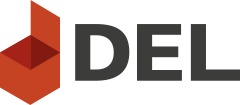Cripping Online Learning Spaces through the Disruption of Universal Designs
Paper: Eunkyung Hwang (Penn State)
Abstract
The rapid adoption of digital and the growth of the hyflex learning community in art and design education during the COVID-19 pandemic has increased accessibility for students with disabilities and has partially bridged the disability divide in learning. In particular, online learning platforms and websites of educational institutions have extended their universal designs, accommodating a wide range of students’ needs and abilities to construct a more inclusive learning environment for both people with and without disabilities. However, as their offline counterparts do, many of these universal designs in online learning offer merely a baseline for equitable learning; they rarely center the learning experiences of students with disabilities. According to critical accessibility studies, we should critically interrogate educational institutions’ Americans with Disabilities Act Standards for Accessible Design compliance-centered access. Centering disability justice in our learning spaces, we should further extend meaningful accessibilities that can interpret “relation between bodies” in spaces (Hamraie, 2018, p. 456). This presentation explores the importance of centering “crip time” (Kafer, 2013, p. 26) and disability aesthetics in online learning spaces. Based on my reflection on my virtual art museum education experiences and explorations of other online learning spaces, I will analyze ableist epistemology that are deeply ingrained in our online education praxis. I will further highlight the need for disrupting universal designs in current online learning spaces, with the goal of transforming those spaces into something designed mainly for people with disabilities. This presentation can also show how the increasing visibility and public belonging of disability aesthetics in online learning spaces can dismantle normative constructions of accessibility in remote learning. Ultimately, I will claim this disruption can move us towards addressing digital inequality between non-disabled people and people with disabilities.
